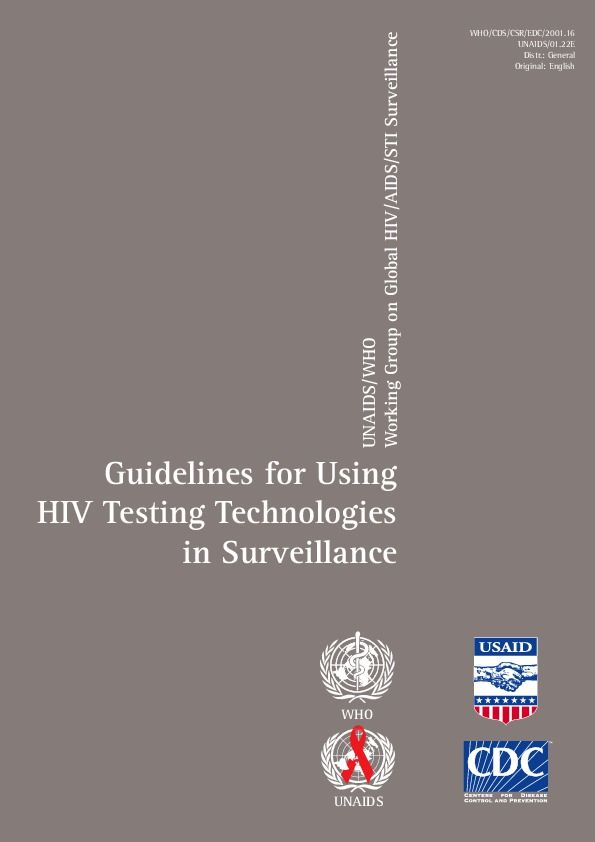Documents
Guidelines for using HIV testing technologies in surveillance : selection, evaluation and implementation
14 de junio de 2001
As the HIV/AIDS epidemic imposes an ever-larger burden on the world, second generation HIV surveillance becomes more critical in understanding the trends of the epidemic and making sound decisions on how best to respond to it. In the context of second generation HIV surveillance, these laboratory guidelines suggest methods for selecting, evaluating and implementing HIV testing technologies and strategies based on a country's laboratory infrastructure and surveillance needs. The guidelines provide recommendations for specimen selection, collection, storage, and testing, and for the selection and evaluation of appropriate HIV testing strategies and technologies to meet surveillance objectives. Because accurate results are important in biological surveillance of HIV, quality assurance measures are addressed. The guidelines also include a glossary of terms used in the document. These technical guidelines are written for HIV surveillance coordinators and other health professionals involved in HIV testing for surveillance purposes in developing countries. They are part of a series of operational guidelines for second generation HIV surveillance systems.
Related
Indicators and questions for monitoring progress on the 2021 Political Declaration on HIV and AIDS — Global AIDS Monitoring 2025
17 de diciembre de 2024
Take the rights path to end AIDS — World AIDS Day report 2024
26 de noviembre de 2024
2024 global AIDS report — The Urgency of Now: AIDS at a Crossroads
22 de julio de 2024
Youth Next Level: guidance to strengthen sustainable youth-led HIV responses
19 de julio de 2024
Youth-led responses: a definition for stakeholders supporting youth leadership in the HIV response
19 de julio de 2024
HIV Response Sustainability Roadmap — Part A — Companion Guide
30 de abril de 2024
Invest to end AIDS, fight inequalities, and save lives — UNAIDS appeal for 2024-2025
26 de marzo de 2024

